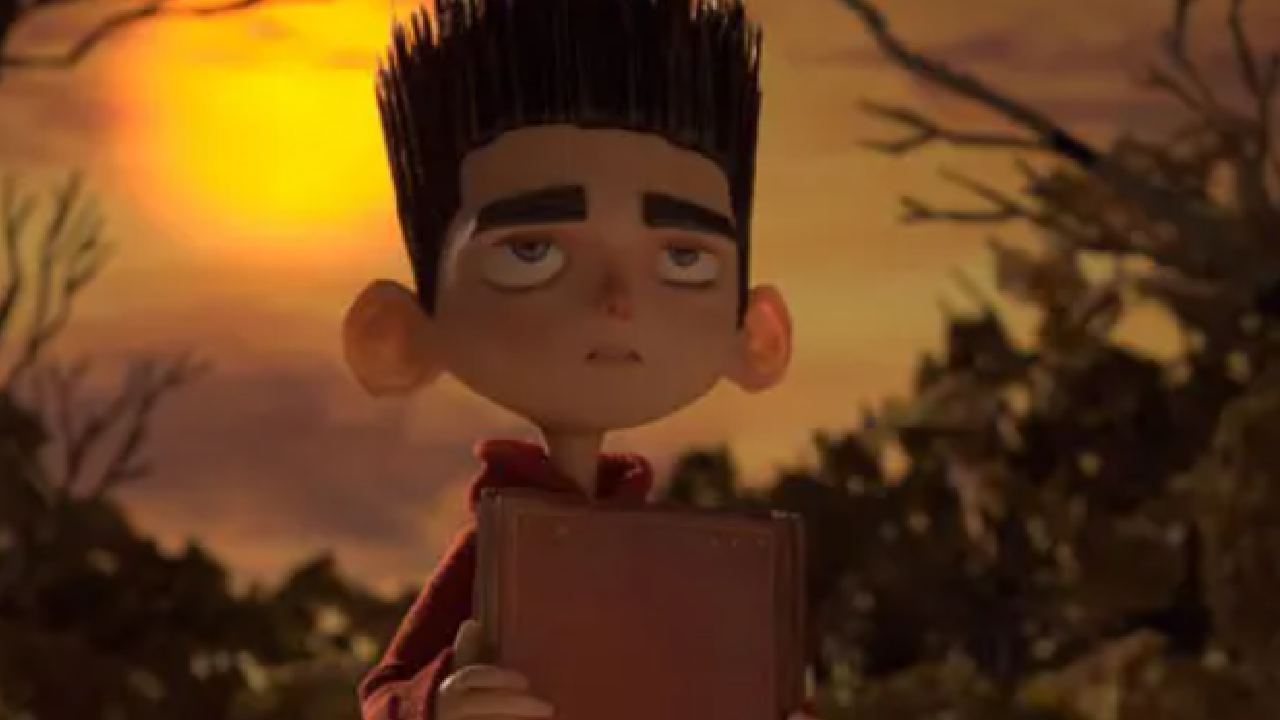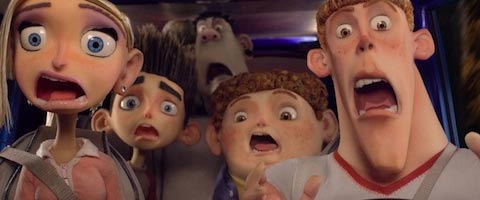ParaNorman Directors Explain Why The Marriage Of Stop-Motion And CGI Is A Great Thing

Stop-motion films are special in the fact that they require so much time and effort to make, but making a feature entirely by hand has its limitations. While many directors and puppeteers have managed to invent and innovate rigs to accomplish more complicated cinematography, there’s only so far that practical effects will get you. To truly advance the medium there has to be a marriage created between stop motion and computer generated imagery. But directors Chris Butler and Sam Fell didn’t see the use of CGI as being a badge of dishonor while making ParaNorman. Instead, they saw it as a gateway to bigger and more impressive things.
Following my interview with Laika President Travis Knight a couple weeks ago, I had a chance to talk one-on-one with Butler and Fell about their new movie. Check out our conversation below in which we discuss working as one company under Laika, the possibility of last minute changes, and how the story evolved.
I know that you, Chris, have been working on this script for about a decade now, but how different is what we see in the final cut from your first thoughts on the story?
Chris Butler: Well, obviously it does change. It grows, it evolves. You’re constantly working to make it better, it’s part of the process. But I think what might actually be unusual about this movie is that, discounting the 10 or so years that I was writing it, when we got into production we knew what we were doing. We knew exactly what we were doing, I think. We knew what we were aiming for…
Sam Fell: Yeah, the basic story. The story and the characters and everything were all there. Chris rewrote during – it got rewritten.
CB: But, I mean, it wasn’t reinvented. That is the unfortunate thing about a lot of animation, that it has to be reinvented while you’re working on it. And you run out of time and you’re backed into a corner. I think we got the space, and part of it was having the opportunity to… [laughs] The opportunity? Basically, working on it for so many years just myself I knew where I wanted it to go, and Sam seeing that and liking it, it gave us an opportunity to get on the same page pretty quickly.
SF: I’ve been around the development proceeds and I know a lot of it is exploring stuff, and I felt that Chris had done that. And I had some questions, but they weren’t fundamental. So if I didn’t know about development I would have thought, “Well, why don’t we go over here [with the story]?” I’ve actually got the feeling that you’ve been over there [laughs] So the real development was getting into a director’s vision for it and figuring out how all aspects of the making of it would speak to the story and support the story and really knit into the story.
Your Daily Blend of Entertainment News
CB: It’s kind of how a movie should be made.
SF: Live action movies more, actually. You get the script right, you go.
In this medium you do almost create the entire film before you actually create the actual film. So much goes into the preparation process and everything is so heavily storyboarded. Does that make last-minute changes totally impossible?
SF: You have to leave room for these talented people to come in. We actually grow this team. The production designer is going to bring something to it – you’ve just got to set parameters so they know where they’re playing, and they they’ve got to play.
CB: If everyone knows the tone of what you’re trying to do…for everyone this one was an easy grasp because of the influences, because I think we all grow up watching the same kind of movies and the reference points were pretty clear.
SF: The design, the look thing came from a few key people. There were Heidi Smith’s character drawings, that brought a very illustrative live, kind of organic feeling, and Ross Stewart drew the world for us in a similar way, with a similar quality. Nelson Lowry, our production designer, brought all that together and made it into a really coherent aesthetic It had so many cool signatures that we carry throughout all the aspects of the design.

There are limitations to the stop-motion medium, were there any things that you wanted to do but couldn’t?
SF: No, there really aren’t those limitations to the medium anymore, to be honest. There used to be...
CB: [speaking for Fell] “And that’s why I got out of it.” [laughs]
SF: Coming back to it, no. You want a big vista you can have that now. We have CG set extensions and there used to just be a camera and a matte painting, but now you can actually have the camera moving up, so you can have a big world.
CB: I think what’s key, though, is being brave enough to try stuff that hasn’t been tried before. Because the technology is there to find a solution, I think. And there are many innovations in what we do, but you still need someone to say, “Just go for it.” If we select a design for a puppet and pretty much everyone in the room is saying, “Err, that’s hasn’t been done before. That’s almost impossible” – but to be told, “Let’s do it anyway!” [Laughs] That’s key I think. To really want, as a studio – not just as a production, but as a studio – to really push the boundaries.
I have to imagine Laika having this big place up in Oregon where you can control it all must be perfect.
CB: A big place, but also a very bold and brave outlook.
SF: They’re just a great mixture of high and low tech, you know? The old craft stuff, but there’s also rapid prototype printing and there’s the visual effects department, all of this is sort of a great blend between those two styles. So it’s not too slick.
Are you actively trying to do as much practically as you can, though, and trying to keep CGI to a minimum?
CB: We’re not militant purists about it. You could approach it like, “If we can’t do this practically, we shouldn’t do it” and we never think that. We always think, “We know what imagery we want to capture and then we use the best method to get it.” Our starting point is always going to be practical, it’s always going to be handmade, because that’s the studio we are. But we would never say no to something because you can’t realize it practically. If we need CG to fix this…
SF: You need crowds, so you get CGI characters in there. But the CGI characters were generated from the puppet department, so they were informed by puppet makers.
CB: And when we did visual effects for clouds in the sky, that was informed by the art department. They actually built models of this storm. So it’s totally integrated. It’s all generated from the same visual code.
And with stop-motion there is a degree to which you want to make the movie look flawed and handmade. Is that something that was integrated into the CGI as well?
SF: Yeah, yeah. They have to muck it up.
CB: It’s probably one of the most aggravating things that they have to do [laughs]. Because they do something right and they get told, “Actually, do it a little bit wrong.”
SF: But the right amount of wrong [laughs].

Eric Eisenberg is the Assistant Managing Editor at CinemaBlend. After graduating Boston University and earning a bachelor’s degree in journalism, he took a part-time job as a staff writer for CinemaBlend, and after six months was offered the opportunity to move to Los Angeles and take on a newly created West Coast Editor position. Over a decade later, he's continuing to advance his interests and expertise. In addition to conducting filmmaker interviews and contributing to the news and feature content of the site, Eric also oversees the Movie Reviews section, writes the the weekend box office report (published Sundays), and is the site's resident Stephen King expert. He has two King-related columns.
